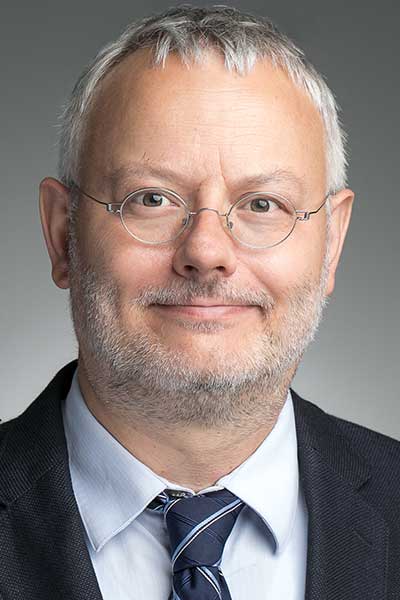Endobronchial ultrasound (EBUS) guided biopsy of the mediastinal lymph nodes has largely replaced mediastinoscopy for most patients in recent years. The shift from surgical biopsy to less invasive sampling approaches has been fueled by advances in EBUS and other technologies. But there are cases where minimally invasive sampling is not enough to reach the correct diagnoses.

“EBUS has pushed the field over the last 10 years toward being less and less invasive,” said Sebastian Kurz, MD, PhD, FCCP, Associate Professor of Pulmonary and Critical Care Medicine and Director of the COPD Clinic at the Yale School of Medicine. “That is the trajectory we have been seeing.”
Dr. Kurz will chair the CHEST 2025 panel discussion Thoracic Diagnostics: Mediastinal Mysteries and Pulmonary Puzzles at 3:30 pm CT on Wednesday, October 22, in McCormick Place, Lakeside Center, Room 353B. The case-based session will emphasize a multidisciplinary approach and focus on diagnostic procedures that did not support a final diagnosis—as well as cases where the eventual diagnosis was unexpected based on the initial clinical presentation.
Mediastinal lymphadenopathy is a fairly common presentation for most pulmonologists, Dr. Kurz said. Typical presentations range from chest imaging showing swollen mediastinal lymph nodes as incidental findings to patients who walk in with obvious pulmonary symptoms.
“EBUS was first used for diagnosing lung cancer, then to diagnose sarcoidosis, and it’s been pushed so far that we can make a diagnosis of lymphoma,” he said. “With a majority of patients, we have a pretty good idea of what the diagnosis is going to turn out being, and EBUS either confirms hypothesis A or hypothesis B.
“But we do see, especially at bigger centers, people who come in with nontypical presentations,” he added. “When we do diagnostic testing, we find things that don’t fit the clinical picture. That is where the multidisciplinary approach comes into play. Bringing different disciplines in to look at the findings and getting actively involved can make the difference in eventually reaching the diagnosis.”
The key is to not perform just a single diagnostic procedure and come up with a presumed diagnosis for patients who may not fit an “either A or B” approach, Dr. Kurz said. Instead, he stresses the need to follow the patient over time, observe how the clinical presentation evolves over time to better fit, or not fit, diagnostic test results. And don’t hesitate to perform additional diagnostics as needed, Dr. Kurz added.
“Some patients are very straightforward, and some patients are super complex,” he said. “Don’t close the book on those presentations that don’t fit the expectations or that progress over time, especially when you get patients referred for a diagnostic procedure. These are the cases where you have to keep your eye on the ball and don’t let go until you have an answer. Multidisciplinary collaboration can make the difference, especially for complex mediastinal pathology and chest infections.”

Call for Topics Is Open
Feeling inspired by all the great sessions in Chicago? Help shape the curriculum for CHEST 2026, October 18 to 21 in Phoenix, by submitting topic ideas from areas you’re passionate about, topics affecting your practice, or new technologies you’d like to learn more about. The submission deadline is Tuesday, December 2, at 2 pm CT.


